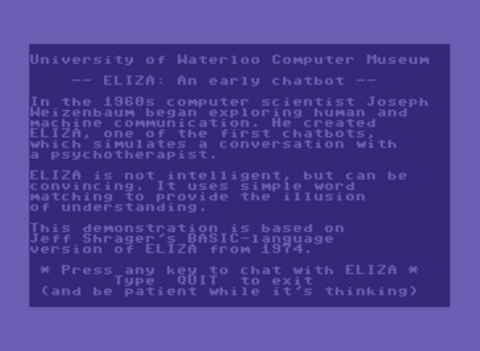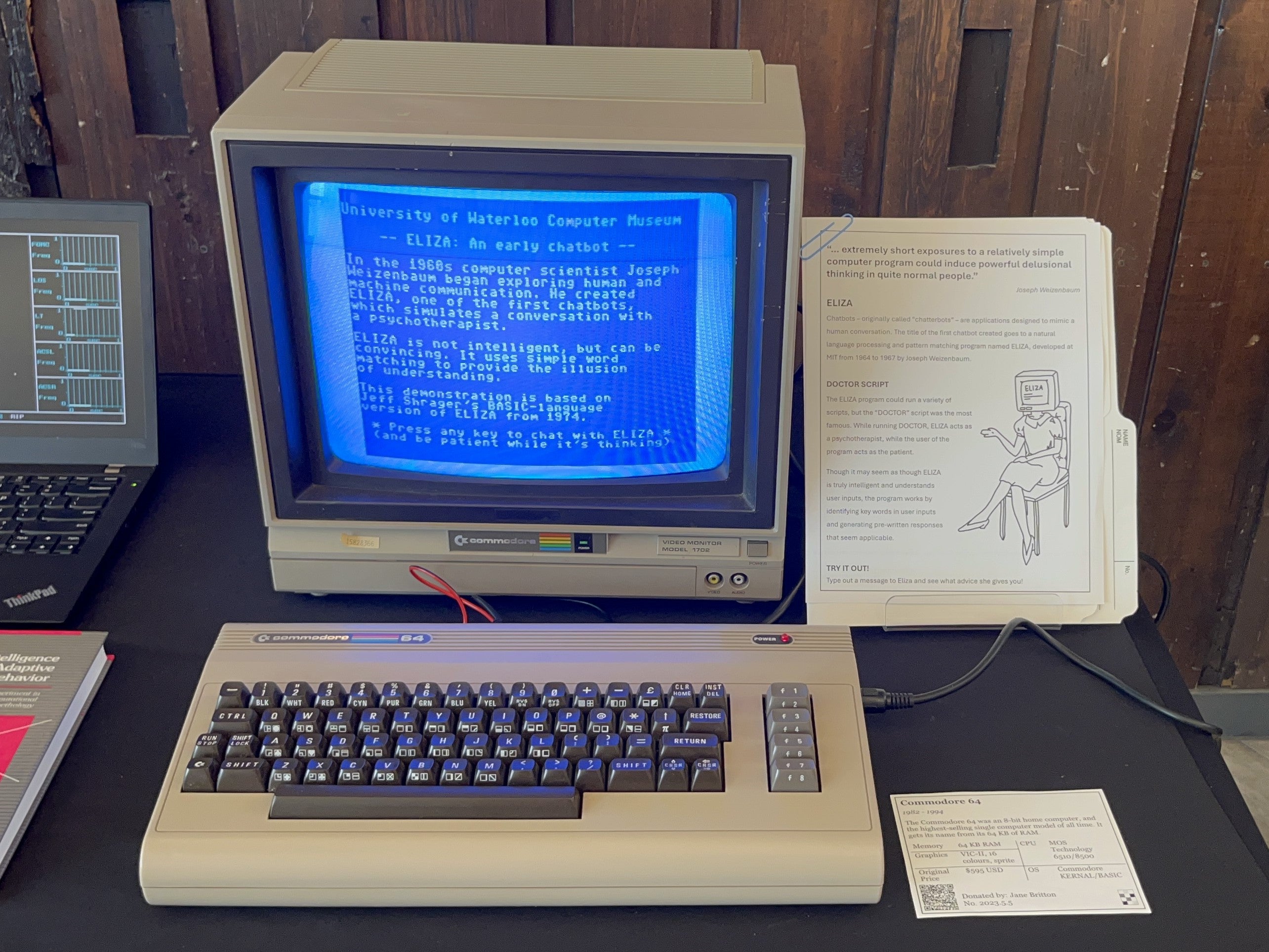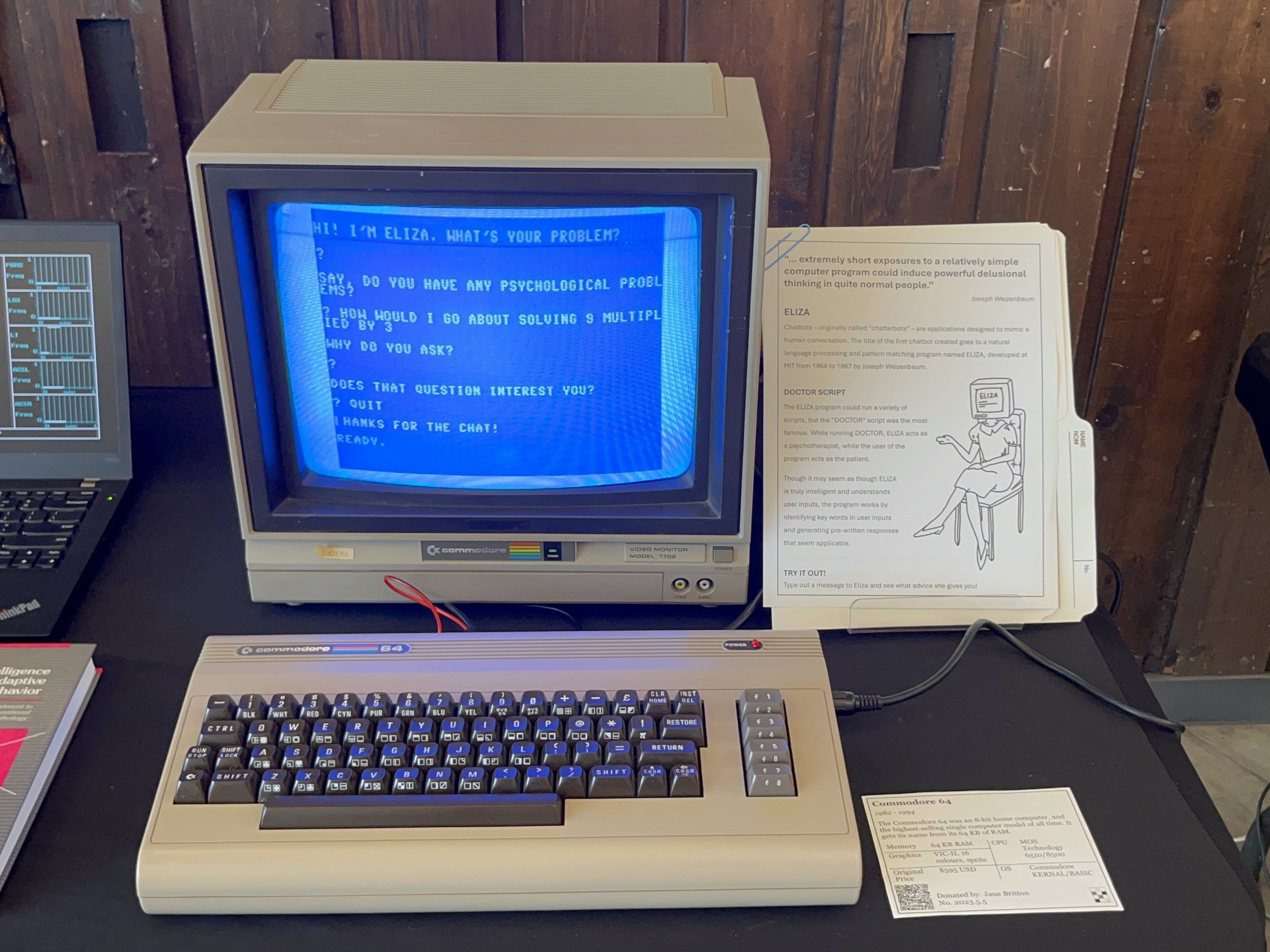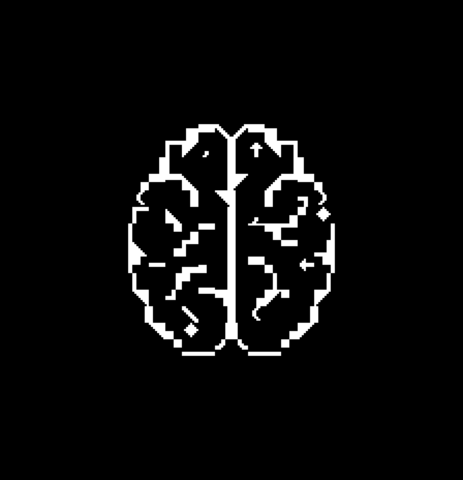
Chatbots & Speech Synthesizers
by Amy VanderLaanChatbots
Chatbots – originally called “chatterbots” – are applications designed to mimic a human conversation. One notable example is Chat GPT.
ChatGPT is an advanced conversational AI developed by OpenAI. It uses machine learning to understand and generate human-like text based on the prompts it receives. You can interact with it to get answers, brainstorm ideas, or have a chat about a wide range of topics. It’s like having a knowledgeable and versatile assistant that’s available anytime you need it.
Lately, ChatGPT has become increasingly popular to be used as a writing assistant. In fact, I asked ChatGPT to write that previous paragraph, and despite reading a bit like a sales pitch, it did a good job. Although I enjoy writing so hopefully that doesn’t outshine the rest of this page.
ELIZA
The title of the first chatbot created goes to a natural language processing and pattern matching program named ELIZA. ELIZA was developed at MIT from 1964 to 1967 by Joseph Weizenbaum and could run a variety of scripts, however the “DOCTOR” script was the most famous. When running DOCTOR, ELIZA acts as a psychotherapist, while the user of the program acts as the patient. Though it may seem like ELIZA is truly intelligent, the program works by identifying key words in user inputs and generating pre-written responses that seem applicable.
When ELIZA was created, many people anthropomorphized the program and talked to it as though it were a real therapist. In his book titled Computer Power and Human Reason: From Judgment to Calculation, Weizenbaum wrote that his own secretary once asked him to leave the room while she conversed with the program. In his words, “extremely short exposures to a relatively simple computer program could induce powerful delusional thinking in quite normal people.”
...extremely short exposures to a relatively simple computer program could induce powerful delusional thinking in quite normal people.
ELIZA Emulator
We used a demonstration of ELIZA based on Jeff Shrager's BASIC-language version from 1974. You can try out this version using a BASIC emulator (we recommend opening this link in a new tab).
Or, for a more authentic experience, visit our museum office in DC 1316 to try it out on a Commodore 64 from 1982.
Here's a bit of my conversation with her:
Hi! I'm ELIZA. What's your problem?
> I haven't been sleeping well
Say, do you have any psychological problems?
> I don't know. Isn't it your job to tell me?
Don't you really know. Isn't it my job to tell me?
She's not putting any human therapists out of jobs.

ELIZA program opening screen in BASIC
ELIZA at the AI Event (click photos to enlarge)
Speech Synthesizers
Speech synthesis is the creation of artificial speech, done by speech synthesizers such as text-to-speech (TTS) systems. One famous early example of speech synthesis took place in 1961, when an IBM 7094 computer was used to recreate the song “Daisy Bell”. You may recognize it if you’ve watched 2001: A Space Odyssey, as the HAL 9000 computer sings it in the film.
TTS tools work by first analyzing text and converting it into linguistic features. It then takes these features and produces corresponding phonetic features. A voice encoder, or vocoder, generates a waveform to convert the linguistic representation into sound.
S.A.M.
S.A.M. – the Software Automatic Mouth – was an all-software speech synthesizer released in 1982. It was developed by Mark Barton and sold by Don’t Ask Software.
The S.A.M. diskette included several programs:
- The S.A.M. speech synthesis program
- RECITER – TTS program that allows S.A.M. to work with ordinary English text-input.
- SAYIT – BASIC program that allows users to type in strings of text and hear it spoken immediately.
- DEMO – BASIC program that tells a short story to demonstrate S.A.M.’s features
- SPEECHES – BASIC program featuring some famous speeches spoken by S.A.M.
- GUESSNUM – Guess the number between one and one hundred game.
We ran S.A.M. on a Commodore 64. An emulated version can be found on the Internet Archive.
Our collection includes a S.A.M. Owner's Manual, donated by Mary Lynn Benninger.
View it in our catalogue: 2019.3.32
S.A.M. DEMO

S.A.M. logo from the Software Automatic Mouth Owner's Manual
Related Links
- ELIZA: Wikipedia
- ACM Digital Library: ELIZA - A Computer Program for the Study of Natural Language Communication Between Man and Machine
- ELIZA Emulator (we recommend opening this link in a new tab)
- IBM 7094 singing "Daisy Bell"
- Software Automatic Mouth: Wikipedia
- S.A.M. Owner's Manual (2019.3.32)
- S.A.M. Emulator: Internet Archive
About the Author
Amy studies Computational Mathematics at the University of Waterloo and is the Computer Museum’s Fall 2024 co-op student. In her free time, she enjoys painting, collaging, and other forms of visual art making.







